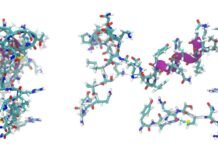Parkinson’s Disease stands as a substantial global health concern, prompting the need for a comprehensive exploration of its intricacies. This blog post is dedicated to simplifying the complexities surrounding Parkinson’s, with a specific focus on its causative factors, recognizable symptoms, and the array of available treatments. Our goal is to present this information in straightforward language, ensuring accessibility for a broad audience.
Unraveling the Enigma of Parkinson’s Disease
Parkinson’s Disease, a significant health challenge on a worldwide scale, affects millions of individuals. The precise origins of this condition remain elusive, yet it is evident that both genetic factors and environmental influences contribute to its development. At the heart of Parkinson’s is the gradual loss of specific brain cells responsible for producing dopamine.
Recognizing the Early Warning Signs
Early detection of Parkinson’s symptoms is pivotal for effective management. Common indicators include tremors, stiffness, slowed movements, and other noticeable changes. By familiarizing themselves with these signs, individuals increase their chances of early diagnosis, setting the stage for more favorable Parkinson’s treatment outcomes.
Furthermore, non-motor symptoms such as changes in mood, sleep disturbances, and a decrease in sense of smell can also provide crucial early clues to the presence of Parkinson’s. Regular health check-ups and proactive discussions with healthcare providers empower individuals to address potential symptoms promptly. Family members and caregivers play a pivotal role in this process by being attuned to subtle changes in their loved one’s behavior and promptly reporting concerns to medical professionals.
Ultimately, a proactive approach to recognizing the early warning signs of Parkinson’s ensures a more timely and comprehensive response, facilitating better overall management of the condition.
A Glimpse into Parkinson’s Treatment Solutions
Effective treatments play a crucial role in navigating Parkinson’s Disease. Ongoing medical advancements provide a spectrum of options, ranging from medications to surgical interventions, offering hope and an improved quality of life.
Focusing on Medications
Key among the medications for Parkinson’s is Levodopa, a substance that replenishes dwindling dopamine levels in the brain. Complementary drugs, such as dopamine agonists and MAO-B inhibitors, are also integral in symptom management and overall well-being enhancement.
In addition to pharmaceutical interventions, maintaining open communication with healthcare professionals is essential to fine-tune medication regimens and address any potential side effects. Regular monitoring and adjustments ensure optimal effectiveness and minimize adverse reactions. It is crucial for individuals with Parkinson’s to actively participate in ongoing discussions with their healthcare providers to tailor medication plans to their unique needs, fostering a collaborative and personalized approach to treatment.
Surgical Interventions: A Beacon of Hope
In instances where medications fall short, surgical options like deep brain stimulation (DBS) emerge as valuable alternatives. DBS entails the implantation of electrodes in the brain to alleviate symptoms. While not universally applicable, surgical interventions extend hope to those deemed suitable candidates.
Moreover, the candidacy for surgical interventions, such as deep brain stimulation (DBS), involves a thorough assessment by healthcare professionals to ensure the procedure aligns with an individual’s specific health conditions and needs. The benefits of DBS extend beyond symptom alleviation, with some patients experiencing an enhanced quality of life and improved daily functioning. It’s crucial for individuals considering surgical options to engage in open discussions with their healthcare team, weighing the potential benefits and risks to make informed decisions about their treatment journey.
As advancements in surgical techniques continue, these interventions stand as an evolving beacon of hope, providing an additional dimension to Parkinson’s treatment options.
Embracing Lifestyle Adjustments and Therapy
Beyond medical interventions, adopting simple lifestyle modifications and engaging in therapy are vital components of Parkinson’s management. Physical, occupational, and speech therapy contribute significantly, while regular exercise and a balanced diet foster overall well-being.
Moreover, cultivating a supportive social network can enhance the emotional well-being of individuals managing Parkinson’s, providing a crucial pillar of support. Prioritizing adequate rest and stress management also plays a pivotal role in maintaining optimal health. By integrating these holistic lifestyle adjustments alongside therapeutic measures, individuals with Parkinson’s can foster a comprehensive approach to their well-being, addressing both the physical and emotional dimensions of their health journey.
Navigating the Future with Parkinson’s
In conclusion, understanding Parkinson’s Disease forms the cornerstone of effective management. From unraveling its causes to recognizing symptoms and exploring diverse treatments, staying well-informed is imperative. Though grappling with Parkinson’s may seem daunting, armed with the right knowledge and a personalized treatment plan, individuals can lead fulfilling lives. Ongoing advances in research and treatment instill hope, fostering a collective effort towards a world where Parkinson’s is not only better understood but also managed successfully.























